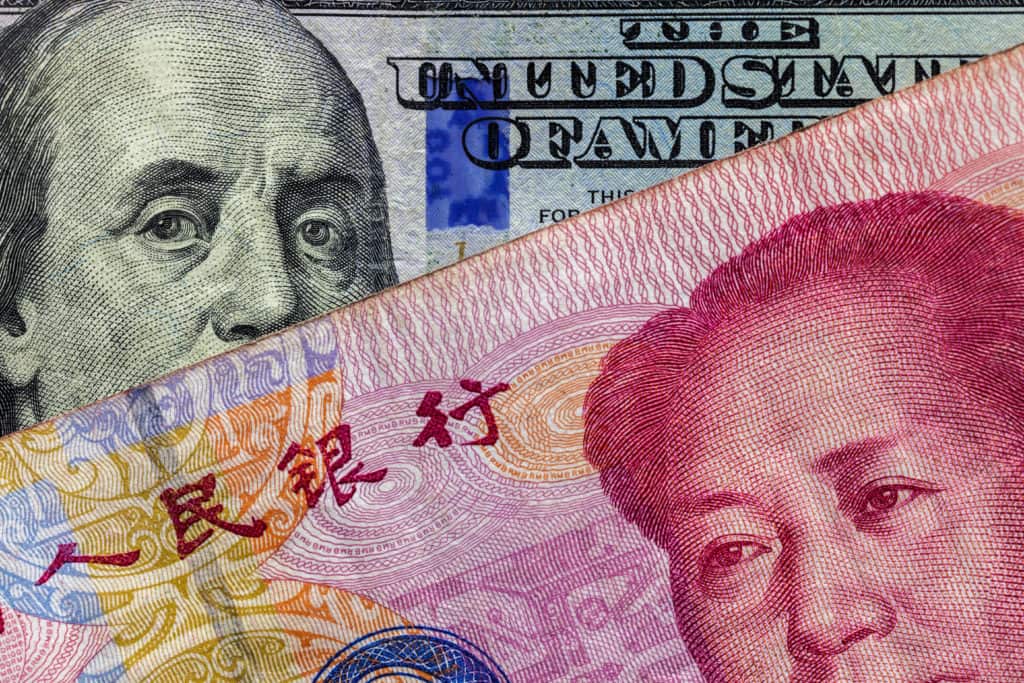Gross Domestic Product, or GDP, is defined by a simple equation that most economics students learn in their introductory Econ 101 class: GDP = Consumption + Investment + Government Spending + Net Exports. When studying the health of a national economy, many experts look to use GDP as the defining factor. In essence, it is the monetary value of all goods and services produced within a country’s borders in a specific period of time.
Solow’s Growth Model explains how economies continuously grow in the very long run. In his research, Robert Solow describes why some countries remain stagnant, while others show continuous growth in their GDP every year. Defined as convergence clubs, this concept explains how countries grow according to a few structural parameters, including its capital share of real GDP, savings rate, depreciation of capital, population growth, and technological progress. Countries with similar growth rates of GDP have similar parameters, and hence, they converge. This theory is confirmed when looking at which countries have lead the world in GDP. When looking at the top 20 strongest economies in 1980, 17 remain on the list today in 2020.
Another look also reveals how the biggest economies have been a driving force for the growth of world GDP. The combination of all 20 nations’ GDP makes up nearly 79% of total GDP, showing its fierce command of global wealth.
Please note that the following information was taken from data by the International Monetary Fund and is derived in current US Dollars.
Top 20 Economies by GDP
| Rank | Country | GDP (US$Mill) |
| 1 | United States | 21,439,453 |
| 2 | China | 14,140,163 |
| 3 | Japan | 5,154,475 |
| 4 | Germany | 3,863,344 |
| 5 | India | 2,935,570 |
| 6 | United Kingdom | 2,743,586 |
| 7 | France | 2,707,074 |
| 8 | Italy | 1,988,636 |
| 9 | Brazil | 1,847,020 |
| 10 | Canada | 1,730,914 |
| 11 | Russia | 1,637,892 |
| 12 | South Korea | 1,629,532 |
| 13 | Spain | 1,397,870 |
| 14 | Austrailia | 1,376,255 |
| 15 | Mexico | 1,274,175 |
| 16 | Indonesia | 1,111,713 |
| 17 | Netherlands | 902,355 |
| 18 | Saudi Arabia | 779,289 |
| 19 | Turkey | 743,708 |
| 20 | Switzerland | 715,360 |
1. United States
Since 1871, the United States has been the strongest economy in the world. Making up over a quarter of the world’s monetary value has given them the nickname of an economic superpower. Its modern infrastructure, tech sector, and an infinite supply of natural resources have given the US its economic prowess.
However, the United States is being closely followed by China, as the IMF projected the gap between the two nations will decrease by 2023. The economic tensions amongst them has unfortunately grown to include the political sphere, as policy makers have started a trade war.

2. China
Stalin’s failure to turn Russia into an economic superpower put to rest the fear of communism as a potential threat to democratic capitalists. However, China’s immense growth throughout the last 50 years has proven that theory incorrect. The centrally planned, closed economy has allowed Chinese officials to build a country that is based mainly on its manufacturing sectors and trade surplus. China has seen a growth of nearly 10% annually over the past 30 years. Its economic reforms since then has led to them being more dependent on services rather than manufacturing. The International Monetary Fund has projected a growth rate of GDP of 5.8% in 2020.
3. Japan
Even the third strongest economy in the world was not immune to the Global Financial Crisis in 2008, and Japanese business is still looking to recover nearly 12 years later after losing economic momentum. The years that followed saw a massive dip in Japanese demand and massive debt in the public sector. As they began to recover, the national was hit with a number of natural disasters, including earthquakes and tsunamis, that further worried investors and lowered demand. Despite all of these complications, including a deflationary spiral, economic growth has remained consistent. An influx of overseas investments and a relatively lax central bank in the Bank of Japan keep them competitive.
4. Germany
Europe’s strongest nation is based on the backs of its capital good exports, which also faced a setback during the 2008 Global Financial Crisis. The growth rate of its GDP has been steadily declining ever since, dipping to as low as 0.5% in 2019. To offset this decline and bolster manufacturing strength and international competitiveness, policy makers introduced Industrie 4.0, which plans on bringing Germany back to its role as world leader of providing advanced manufacturing solutions.
5. India
Currently sitting at fifth, India is the world’s fastest growing economy that already has a GDP worth over one trillion dollars. After gaining political independence from the United Kingdom and subsisting in an agrarian economy, its manufacturing and services sectors have emerged strongly. Today, 60% of their GDP and 28 % of employment is made up of its services sector. Manufacturing has been given a push from political leaders with its ‘Made in India’ initiative, keeping it a crucial sector for the overall growth of the nation’s economy. Agriculture makes up around 17%, and while that isn’t much, it is a much higher percentage than in European or American economies.
6. United Kingdom
The United Kingdom saw increasing gains every quarter from the span of 1992 until 2008, when the Global Financial Crisis struck their economy was set back for five quarters, causing it to contract by 6%. It wasn’t until 2013 that they recovered to pre recessionary levels. The services sector is what drives the United Kingdom, making up 75% of its GDP. Another important note is its agricultural subsistence. The UK produces 60% of its demand for food domestically, causing it to be their third biggest sector.
7. France
France has more tourism than any other country in the world. However, they were not immune to the Global Financial Crisis, and have seen declining growth rates in recent years. Its unemployment rate has been hovering around 10% for the better half of the last decade, causing immense pressure to be placed on government officials to reboot the economy. While tourism is the driving force of its economy, France leads the European Union in agriculture, taking account for about one-third of the continent’s farm land. The chemical industry, automotive industry, and armament industries all make up France’s manufacturing sector. The economy is expected to see declining rate of growth in its GDP over the next few years, according to the International Monetary Fund.
8. Italy
By 2023, the Italian economy is likely to expand by %2.26 trillion. Italy has been plagued with financial and political chaos over the past few years. During the summer of 2019, the government temporarily shut down over concerns of a growing alternative right wing movement with the name Lega Nord. Public debt seems to be stagnant at around 132& of its GDP, and its unemployment rate sticks around the double digits. On a more positive note, exports and capital investments are increasing and driving economic recovery efforts. Its growth rate of its GDP should hover around the 1% mark over the next few years.
9. Brazil
Brazil is largest country in Latin America by land, population, and GDP. Brazil was able to utilize its advantage in commodities to remain on top, until they suffered a few setbacks at the end of the most recent commodity supercycle. In addition, investment was dampened, along with a lackluster business environment, thanks in part to its internal political problems and corruption, which lead to political uncertainty. The latter half of the 2000’s saw Brazil’s economy growing at around 4.5% annually, which fell to around 2.8% from 2011-2013. In 2014, the growth rate had dwindled to about 0.1%, but improved to 2.5% the following year before contracting again to 1% in 2017. Brazil is a part of the BRICS, an acronym for Brazil, Russia, India, China, and South Africa, which represents the five major emerging national economies.
10. Canada
Canada overtook Russia and took the 10th spot on this list in 2015. Its unemployment rate has remained stable and is likely to shrink in the coming years. While services make up the majority of its GDP, it is the manufacturing sector that attributes for nearly 68% of its exports, coming mainly from merchandise. Canadian officials are setting a base for future growth in its manufacturing industry, hoping to set the nation up with crucial elements in order to promote future economic growth.
11. Russia
Another member of BRICS, Russia is the largest country on Earth by landmass that suffered heavy blows in the 1990’s. A depleted industrial and agricultural center, along with subpar infrastructure and lacking the fundamentals of a centrally planned economy, such as China. Russia saw a growth rate that hovered around 7% during the 2000’s because of the commodity boom. They were heavily dependent on oil, and paid for it dearly during the 2008 Global Financial Crisis and again in 2014 with plummeting oil prices. Their lack of having an economy with a diversification of sectors caused their economic growth rate to contract to 0.2% in 2016. Recently, it has rebounded and is expected to continue to grow.
12. South Korea
The South Korean economy has been blessed with conglomerates such as Samsung and Hyundai to carry it to the 12th spot in terms of GDP. Along with China as a member of the Asian Tigers convergence club, South Korea has seen impressive growth over the past few decades, establishing themselves as a nation defined by its technology sector and industrialization. Its ability to grow so strongly has been accompanied by its efforts to integrate itself into more global markets, helping them to become the industrialized power they are today. South Korea was able to grow its GDP to reach the trillions in 2004 after being propelled by their international trade and industrialization. Exports are king in South Korea and presents itself as a great investment opportunity with a high ease of business ranking.
13. Spain
Following BREXIT, Spain is the fourth biggest economy within the European Union. The nation was hit heavy after the Global Financial Crisis in 2008, and saw a recessionary period until late into 2013. They are being carried back to health slowly but surely by its tourism and exports, which have been performing stronger than ever before, along with a moderate return of domestic consumption and demand. Agriculture usually plays a critical role in the Spanish economy, but this sector has been slowly decreasing to around 3% today, but the nation remains a major global exporter of food staples such as pork, wine, and olive oil. Its industrials sector primarily consists of automobiles, chemicals, pharmaceuticals, and industrial machinery.
14. Australia
Australia’s economy has been growing at a steady pace for the past 20 years with a low rate of unemployment, low public debt, minimal inflation, a strong services sector, and a trustworthy central bank. Similar to the United States and Canada, Australia is rich with natural resources which has allowed them to become a major exporter of agriculture and energy resources. The services sector is the major contributor to GDP, accounting for 70% of national wealth and 75% of the employed population. Australia is expected to reach a GDP level of $1.7 trillion by 2023, according to the International Monetary Fund.
15. Mexico
Mexico has the second largest economy is Latin America behind Brazil. Services and industries make up the majority of Mexican GDP, taking over 63% and 33%, respectively. Agriculture still plays a prominent role, taking a 4% share. Developed industries in Mexico include automotive, oil, and electronics. Tourism and financials are also dominant suppliers to Gross Domestic Product.
16. Indonesia
The largest economy is Southeast Asia, Indonesia has shown tremendous growth over the last 20 years. The Asian Financial Crisis of 1997 deemed Indonesia a victim, but the nation has still shown impressive growth since then. The poverty rate was nearly cut in half from 1999 to 2016 thanks to the World Bank. Although it has the fourth largest population in the world, causing their GDP per capita and purchasing power to pale in comparison to its competitors, Indonesia has been able to keep up by depending on its industry, services, and agricultural sectors.
17. Netherlands
The Netherlands have the sixth largest economy in the European Union. In 1980, they ranked 12th in global economic measurements according to GDP. The abundance of Dutch natural resources coupled with an influx of tourism and trustworthy industrials such as food processing, chemicals, electric machinery, and petroleum refinery, have all been major contributors to the Netherlands’ GDP. Its agricultural sector has kept up with the times and become highly mechanized and increasingly productive.
18. Saudi Arabia
Saudi Arabia is a dominant supplier of oil, with the natural resource found abundantly throughout the Middle Eastern nation, so much so that it is estimated that 18% of the global oil supply is within its borders. It is the largest exporter of petroleum in the global economy, making up 50% of its GDP and 70% of its exports. Saudi Arabia has also been endowed with other natural resources such as gold, iron ore, natural gas, and copper. The oil shock of 2016 caused some room for concern, but its growth of GDP remained strong at 1.7%. With some policy dilemmas, 2017 saw a massive government budget deficit, which was being financed by selling bonds and tapping into foreign reserves. Currently, government officials and economists are looking to diversify the nation by pressing its non oil economy and tackling unemployment. Although the growth rate slumped to 0.9% in 2017, it bounced back to almost 2% the following two years.
19. Turkey
Turkey’s improved cost of living has allowed its middle class to grow from 18% of the population to 41% from 1993 to 2010, according to the World Bank. The International Monetary Fund expects the large Middle Eastern nation to grow its GDP into the trillions by 2023. Turkey has been somewhat immune to market swings and recessions, as its growth rate has remained around 4.5% from 1960 to 2012. This has been driven most recently by its industrials and services. With macroeconomic and fiscal stability, along with an increase in employment and income levels, they are projected to continue their streak of growth for at least the near future.
20. Switzerland
Switzerland is known as having some of the most secure and trustworthy financial institutions in the world. The country offers its population an extremely high standard of living, represented by the world’s second highest GDP per capita, currently sitting at $82,950.28. Tourism and financials run the show in Switzerland, along with its rich tradition of industrials, specifically in the clock and watched market. They also have an impressive presence in pharmaceuticals, with agriculture only making up 1% of the share of GDP. Its unemployment rate of 3% and highly skilled work force all benefit from the Swiss’ stable political system, modern infrastructure, and tax rates which favor capitalist endeavors. Its growth rate has been stable at around 1% to 1.5%.












